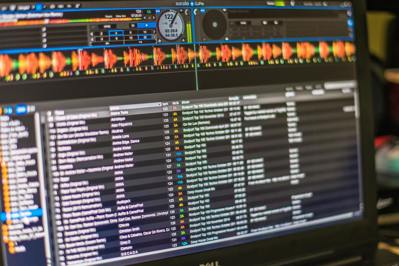
I am a seasoned DJ, but transposing my craft into something I can explain to young people is something I struggled with at first – and even the most experienced DJ can grapple with this when trying to get young DJ students started. I have been playing records for 20 years, and I have found turning this into a discipline such as clarinet teaching has required some thought and a different approach.
In my experience the main thing that needs to be communicated is that there are several technical processes that need to be mastered, at least in part, before the more intuitive and spontaneous side of the craft can be unlocked. There are easy ways to work through these to give students all the tools they need; but the main thing to stress is this is not, and never will be, an instrument in the classical sense.
Due to its prevalence in popular culture, all young people want to be able to DJ, whether organ scholar, jazz singer, metal guitarist or non-instrumentalist. The first thing is to stop thinking of it as something to get the non-musical students to do in order for them to be ‘engaged’. That's a patronising way to think, and while quite clearly it isn't a clarinet, it also isn't easy to do well.
The second thing to convey is that essentially a ‘mix’ – combining one record with another to play it in any set – is about switching from one priority to a different one. I refer to records as ‘primary’ and ‘secondary’. Covering the following technical basics will give all students a solid foundation.
Beat matching
You can't do anything until this happens, so teach it first. Don't use sync; while it is a useful tool when mounting more adventurous multi-deck and loop-based ideas, it isn't a fundamental skill, and I have seen many established DJs come awry because they rely too much on this technology. Given the access to screens on modern equipment, you should encourage students to use their ears, not their eyes. Don't just cheat – it won't help you when you jump on an older system or things aren't ‘on the grid’ in software like Rekordbox.
Try giving students a loop of one track and then a cue point in another track on the opposite deck. Allow the students four bars from cue'ing the record to get it in time. This process can be repeated over and over, and can be brought down in increments as students advance.
Volume and trim/gain/red lining
Encourage students to think about water and drainpipes! There is only so much water that can go down a pipe, and this demonstrates to students that they need to manage gain staging at all times. Teach the difference between volume and trim, and how they should both be used: trim to match the volumes of the tracks, and the volume faders to control the output balance between the two tracks, while making sure the primary track at any given time is loudest.
Always, always, always keep an eye on the master out. Red lining should be treated as a sin.
Teach students that if you red line on a stage or in a club, the engineer will just limit you further and further until everything is distorted. Teach this fundamental principle early on to ensure good habits as they develop.
EQ
Once your records are in time, this is where the next area of switching of priority comes in. The frequency range is a logarithmic scale and so the lower end is the loudest part. The bass part is what needs to be switched; you cannot have two bass lines at the same time. With this, students start to understand the frequency range which can open the world of music production, as well as an understanding of FX processors they can use in their mixes, like filters.
Introduce the idea of harmonic mixing
Let's face it, two records in time and in the same key is hugely satisfying. Show your students the key-identifying features in most modern software for organising your music library and how to use it. Like sync, students shouldn't rely on this and should be encouraged to use their ears to identify if records are playing in the same key.
Using Rekordbox
The best, and most common, DJ system is by Pioneer. This is what you will have access to in almost all professional settings when not providing your own decks for a performance; so it makes sense to use this in education.
Rekordbox is Pioneer's song management and laptop performance software, which is free (up to a point) and quite well built. Students should be organised in lining up their tracks, creating playlists, entering hot cues and marker points, and so on. That way they will be prepared for when they get on any decent set of decks.

A note on equipment
If budgets are tight, there are plenty of options at the lower end of the Pioneer range that can power laptop mixing in Rekordbox. These are great but limited. If possible, try to stretch to a stand-alone unit like the XDJ-RR, or even the XDJ-AZ, which is Pioneer's new flagship model.

Once you have got students to engage with these techniques and begin to perfect them, tell them the entire craft isn't about the techniques at all; it's about the records. Play them stuff you like and that you believe in, and encourage them to do the same. A DJ needs to know their repertoire (where the beat comes, where the vocal is) and be able to express that. Then you can start to weave your way through to create your own musical world. Enjoying every breakdown, drop and hook along the way. Happy mixing!




